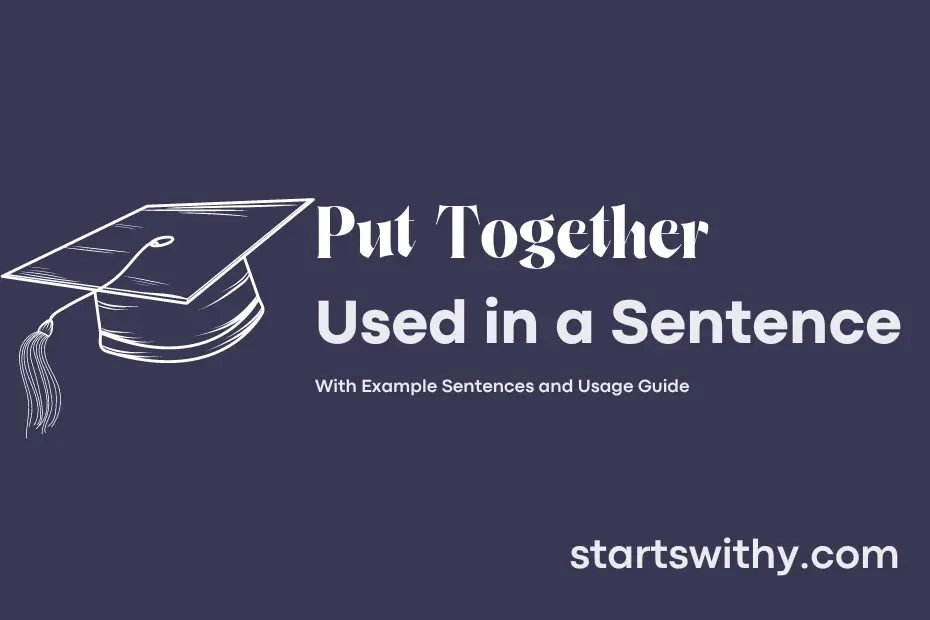Have you ever struggled with assembling something correctly? To “put together” means to construct or organize different parts to create a unified whole. This phrase is commonly used when referring to activities such as building furniture, completing puzzles, or compiling information in a coherent manner.
The process of “putting together” involves following instructions or guidelines to ensure that all components are arranged properly. This can involve physical pieces like a jigsaw puzzle or abstract elements like structuring a written document. The goal is to bring all parts together in a way that is logical and functional.
7 Examples Of Put Together Used In a Sentence For Kids
- Put together the puzzle pieces to complete the picture.
- Let’s put together the shapes to make a house.
- Can you put together the colored blocks in a row?
- We can put together the letters to spell your name.
- Use your imagination to put together a beautiful story.
- Put together the crayons neatly in the box.
- We will put together different shapes to make a pattern.
14 Sentences with Put Together Examples
- Put together a study group to work on the project.
- Can you help me put together a playlist for the college festival?
- Let’s put together a presentation for our upcoming seminar.
- We need to put together a plan for the upcoming exams.
- Put together a list of potential internships for the summer break.
- We should put together a budget for the college trip.
- It’s important to put together a strong resume for job applications.
- Let’s put together a volunteer group for the upcoming charity event.
- Put together a schedule for the upcoming semester.
- Can you help put together a script for the college play?
- Let’s put together a sports team for the inter-college competition.
- We need to put together a team for the college hackathon.
- Put together a plan for the college cultural fest.
- It’s essential to put together a study timetable for the exam season.
How To Use Put Together in Sentences?
To put together means to assemble or create something by combining different parts or elements.
Here is a guide on how to use “put together” in a sentence for beginners:
-
Understand the Meaning: Before using “put together” in a sentence, make sure you understand its definition and how it is commonly used to avoid any confusion.
-
Choose the Right Context: Use “put together” when you want to convey the idea of assembling, creating, or organizing something from various components.
-
Construct the Sentence: When using “put together” in a sentence, remember to start with a subject followed by the phrase “put together” and then specify what is being assembled or created. For example, “She put together a beautiful bouquet of flowers for her mother.”
-
Be Specific: Clearly state what is being assembled or created to provide context and make your sentence more impactful. For instance, “We put together a presentation for the board meeting.”
-
Practice Makes Perfect: To become more comfortable with using “put together” in sentences, practice writing sentences using this phrase in different contexts.
Remember, using “put together” in a sentence is all about expressing the action of assembling or creating something from different parts. By following this guide and practicing, you will soon master the use of “put together” in sentences.
Conclusion
In conclusion, sentences using “put together” can convey the idea of assembling or organizing various elements to create a cohesive whole. These sentences often highlight the process of combining different parts or pieces to form a complete entity or solution. When “put together” is used in a sentence, it emphasizes the act of bringing things together in a thoughtful and structured manner.
Whether it be putting together a puzzle, organizing a team, or assembling a project, the phrase “put together” signifies the action of uniting separate components to establish a unified entity. Overall, sentences with “put together” showcase the ability to combine disparate elements in a coherent and systematic way to achieve a specific goal or outcome.



